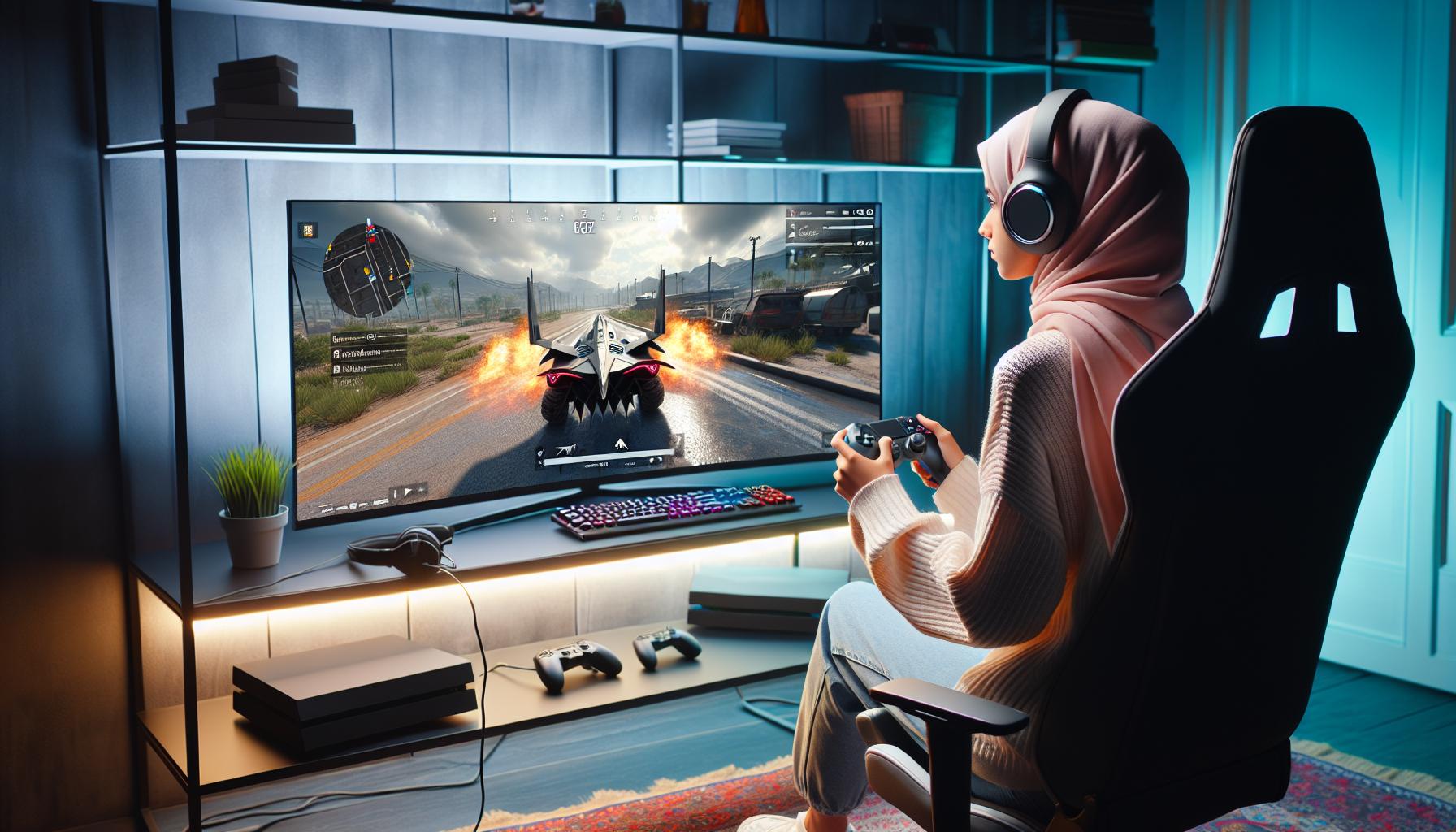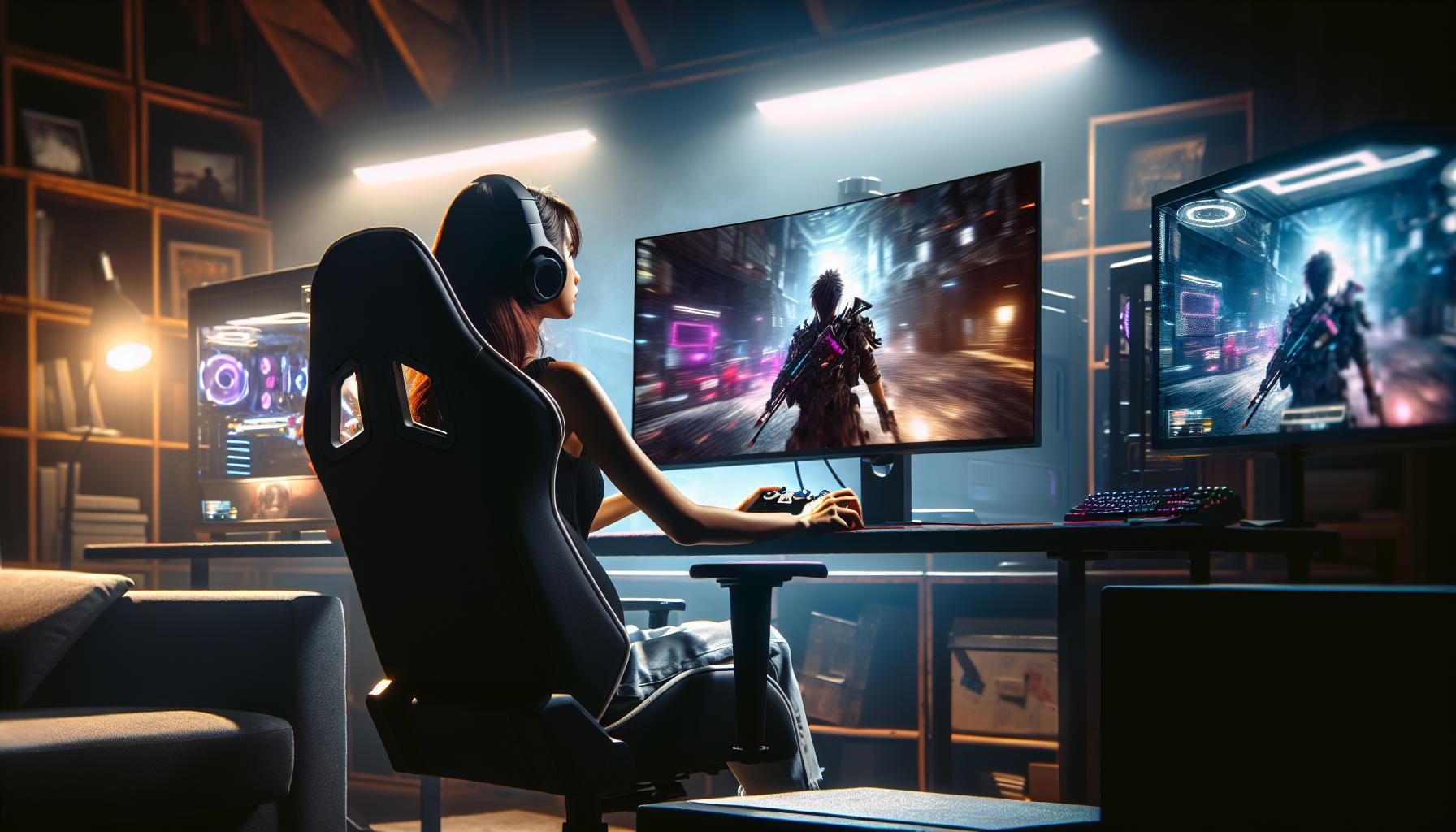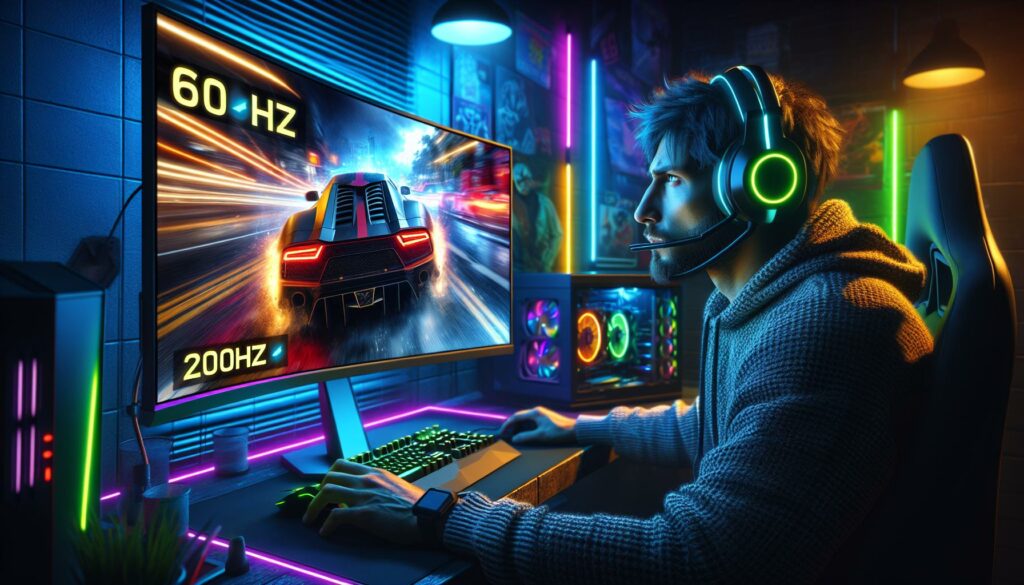When it comes to gaming, the debate between 60Hz and 120Hz refresh rates can make or break your experience. I’ve seen firsthand how these numbers impact gameplay, making it crucial for gamers to understand the difference. Whether you’re a casual player or a competitive gamer, the refresh rate of your monitor plays a significant role in how smooth and responsive your games feel.
Switching from 60Hz to 120Hz can elevate your gameplay, reducing motion blur and enhancing clarity. But is it worth the investment? In this article, I’ll dive into the key differences between these two refresh rates and help you decide which one suits your gaming style best. Let’s explore how these numbers translate into real-world performance and why they matter for your next gaming session.
Key Takeaways
- Understanding Refresh Rates: Refresh rates, measured in hertz (Hz), indicate how often a display updates its image per second, significantly impacting gaming performance.
- 60Hz vs 120Hz: 60Hz provides a solid gaming experience, suitable for casual players, while 120Hz offers enhanced fluidity, reduced motion blur, and quicker response times, ideal for serious gamers.
- Gaming Performance Benefits: Higher refresh rates like 120Hz result in smoother animations and less input lag, especially in fast-paced games such as first-person shooters and racing titles.
- Hardware Requirements: To fully enjoy 120Hz gaming, a compatible monitor and a capable graphics card are essential, along with settings adjustments to unlock the higher refresh rate capabilities.
- Visual Clarity: The difference in visual clarity between 60Hz and 120Hz is significant; 120Hz provides sharper images, making it easier to track fast-moving objects and enhancing overall immersion.
- Impact on Competitive Gaming: For competitive gamers, the reduced input lag at 120Hz can lead to improved control and responsiveness, which can be crucial for success in high-stakes scenarios.
60hz vs 120hz Gaming
Refresh rate refers to the number of times a display updates its image per second. It’s measured in hertz (Hz) and plays a crucial role in gaming performance.
What Is Refresh Rate?
Refresh rate indicates the frequency at which a display refreshes the image on the screen. A 60Hz refresh rate updates the display 60 times per second, while a 120Hz refresh rate updates it 120 times per second. Higher refresh rates lead to smoother motion and reduced flicker. Many modern monitors and TVs support refresh rates beyond 60Hz, providing gamers with options for enhanced visual clarity and responsiveness.
Importance of Refresh Rate in Gaming
Refresh rates directly impact the gaming experience. A higher refresh rate, such as 120Hz, results in smoother animations, which can improve gameplay fluidity. This enhancement is particularly noticeable in fast-paced games like first-person shooters and racing games, where quick reactions matter. Reduced motion blur occurs with higher refresh rates, allowing gamers to track fast-moving objects more easily. Additionally, a 120Hz display minimizes input lag, making the game feel more responsive and improving the overall experience.
60Hz Gaming Experience

A 60Hz gaming experience provides a solid foundation for casual gaming. It offers decent visuals and responsive gameplay for many titles, particularly those that are not graphically demanding.
Performance Characteristics
A 60Hz refresh rate refreshes the screen 60 times per second. This rate delivers a smooth experience in most slower-paced games, such as turn-based strategy and role-playing games. Games generally display fluid visuals, but fast movements could produce motion blur. Gamers often perceive input lag, especially in competitive settings. For titles like platformers, the delay may affect precision, but many players adapt quickly. Graphics quality also impacts performance at this refresh rate; higher resolutions can lead to frame drops, potentially affecting overall gameplay.
Common Limitations
While 60Hz is sufficient for various genres, it has limitations. Competitive gamers often notice the lack of responsiveness compared to higher refresh rates. Fast-paced titles, like first-person shooters, suffer from stutter or lag, reducing performance. Additionally, the gap between frame rates may induce screen tearing, catching players off guard. Lower frames per second can lead to a less immersive experience. With advancements in gaming technology, many find that 60Hz no longer meets their expectations, making the shift to higher refresh rates appealing for serious gamers.
120Hz Gaming Experience

Upgrading to a 120Hz refresh rate elevates the gaming experience significantly. Gamers notice improvements in fluidity, responsiveness, and overall visual quality.
Enhanced Performance Benefits
Enhanced performance benefits accompany a shift to 120Hz gaming. Increased refresh rates reduce motion blur and provide sharper images during fast-paced action. Games like first-person shooters and racing titles exhibit smoother animations, enabling quicker reactions. A lower input lag enhances precision for competitive gaming environments. Gamers can accurately assess movements and respond instantly to fast-changing scenarios, which can make a pivotal difference in gameplay.
Requirements for 120Hz Gaming
Requirements for 120Hz gaming involve specific hardware and settings. A compatible monitor or television is essential, offering a native 120Hz refresh rate. Additionally, the gaming rig must feature a capable graphics card that supports higher frame rates. Many games require adjustments within the settings menu to unlock the benefits of 120Hz gameplay. Ensuring a stable setup with a robust connection, like DisplayPort or HDMI 2.1, further optimizes the experience. This combination ensures players fully leverage the advantages of 120Hz gaming, enhancing immersion and performance.
Comparison of 60Hz vs 120Hz Gaming

I explore the distinct differences between 60Hz and 120Hz gaming, focusing on visual clarity and gameplay responsiveness.
Visual Differences
Visual clarity varies significantly between 60Hz and 120Hz displays. A 120Hz refresh rate provides sharper images and smoother motion, which reduces motion blur in fast-paced sequences. For instance, in fast-action games like “Call of Duty” or “Need for Speed,” 120Hz allows for clear visibility of rapid movements and intricate details, contributing to an immersive experience. In contrast, 60Hz can struggle during intense action, leading to blurred visuals and less precision in quick responses, making it challenging for players to track fast-moving objects.
Impact on Gameplay
Gameplay is notably affected by refresh rates. With 120Hz, animations appear smoother and more fluid, leading to improved control and responsiveness. This becomes crucial in competitive gaming, where split-second decisions can determine outcomes. For example, a 120Hz rate reduces input lag—the delay between pressing a button and seeing the action on screen—resulting in a more immediate reaction to in-game movements. In contrast, at 60Hz, gamers might experience noticeable input lag, which can hinder performance in competitive scenes and diminish overall enjoyment.
Understanding these differences equips gamers with the knowledge to select a refresh rate that enhances their gaming experience, aligning with their specific gaming habits and preferences.



